Datasheet
Year, pagecount:2010, 11 page(s)
Language:English
Downloads:2
Uploaded:May 14, 2020
Size:491 KB
Institution:
-
Comments:
University of Michigan
Attachment:-
Download in PDF:Please log in!
Comments
No comments yet. You can be the first!Most popular documents in this category
Content extract
Source: http://www.doksinet Effects of Computerized Programs on Bilingual Students Effects of Using Computerized Programs on Bilingual Students Nada Darwish University of Michigan - Dearborn EDK 500 1 Source: http://www.doksinet Effects of Computerized Programs on Bilingual Students 2 Abstract This research proposal will show if there is a benefit in using computerized tutorial programs with English Language Learners (ELLs). A 16-week experimental study will be preformed with two bilingual classrooms. The classes will be exposed to a 16-week computer- assisted practice using the software ELLIS. In this experiment I will give the students a pre-test using DIBLES to measure their fluency and a post-test to be able to compare the results. I will be analyzing the effect of using the tutorial program on the ELL students’ fluency and comparing it to the students who did not participate in it to see if there is a significant gain in reading fluency. Source: http://www.doksinet
Effects of Computerized Programs on Bilingual Students 3 Introduction English Language Learners (ELL) seem to not have the necessary language that is needed to fully function in a mainstream classroom setting. In every subject in school, a language barrier proves to be a problem in itself. As a result, ELL students’ are deficient in comparison to mainstream students and are not scoring as high as their peers. Based on the 2000 Census, the Census Bureau estimated that 3.4 million children are English Language Learners in the United States alone. The purpose of this study is to investigate if the use of tutorial computer programs will help accelerate the rate in which English Language Learners acquire the English Language in comparison to their counterparts that were not exposed to the same program. Torgeson (1986) states that computers have the capacity to deliver motivated, carefully monitored, individualized, and speed-oriented practice in concentrations beyond those available in
traditional assessments. Fluency in reading is the key to text comprehension. “Because the ability to obtain meaning from print depends so strongly on the development of word recognition accuracy and reading fluency, both the latter should be regularly assessed in the classroom, permitting timely and effective instructional response when difficulty or delay is apparent” (Snow, Burns, & Griffin, 1998). This study will answer the question: Would the use of computer tutorial program help the English language Learners read more fluently and faster than other ELL students that were not exposed to the tutorial program? I think the English Language Learners who are using ELLIS (interactive computerized program) will likely advance faster than the English Language Learners that are not using the tutorial program. Source: http://www.doksinet Effects of Computerized Programs on Bilingual Students 4 Literature Review English Language Learners and Instruction System (ELLIS) is a
program that is designed to move English Language Learners towards basic English fluency. Ellis is a comprehensive program that addresses a wide range of proficiency levels. A survey of state education agencies found that in 2000-01 around 4 million students with limited English proficiency were attending public schools, which is almost 10 percent of the total K-12 student population. Searching for computer-assisted programs to help the English Language Learners is one way to relieve the problem, and it is of interest to language teachers and learners because it can provide individualized instruction and immediate feedback on the correctness of a learner’s response to computerized tasks (Tanner, 2009) The research that Tanner conducted was intended to empirically evaluate a self-directed, computer assisted program that uses oral reading to improve students’ pronunciations. Results form the same study revealed that the computerized programs had a significant effect on learners’
pronunciation of words in the English language. One approach that has the potential to improve the teaching and learning of ELLs is the use of technology in the classroom (Waxman & Padron, 1995). Furthermore, the research on improving the teaching and learning of English Language Learners through instructional technology (Yolanda Padron 1996) sheds more light on the use of technology to help ELL students. Both studies found that there is significant gain by incorporating instructional technology in teaching ELL students. The studies also found that using technology in the instruction of ELL students was beneficial in many ways. Many researches were done on adult Source: http://www.doksinet Effects of Computerized Programs on Bilingual Students 5 English Language Learners and high school ELL students, but my research will be done on the elementary level targeting students with very limited English Language abilities. Method This study will be conducted at Salina Elementary
School and the participants in this study will be two 3rd grade bilingual classrooms in which all of the students in these two classrooms are English Language Learners (ELL). The students in one of the classrooms will be given an extra 30 minutes in the computer lab to work on the program ELLIS. They will be asked to put their headphones on and follow directions on the software. The teachers will be monitoring the students and observing the students use or misuse of the program and computers. Prior to the project, I will be obtaining consent from the parents/ legal guardians of all participants informing them of the research and requesting a signature(Appendix C). Before the research starts I will be giving each child the DIBLES fluency test and save it to a spreadsheet program. Every three weeks I will utilize part of the DIBLES on them and again save it to the same spreadsheet. By the end of the research I will have 4 scores on my research group. At the same time I will be testing
the other two 3rd grade bilingual classrooms at Salina Elementary every three weeks that are not participating in the research. After I conclude my research I should have two sets of data to compare. The analysis of the data collected will be analyzed in three phases. In phase one I will compare the two 3rd grade classrooms that participated in the research to see if there is a sizable discrepancy in scores. In phase two I will compare the other two 3rd grade classroom that did not participate in the research again to see if there is a considerable discrepancy in scores. In the third phase I will compare the researched and Source: http://www.doksinet Effects of Computerized Programs on Bilingual Students 6 not researched group to see if the researched group gained more fluency than the other group. Since it is a quantitative research I can manipulate data and create graphs to reflect my threephase analysis. I also I could sort data and compare girls and boys to see if there is a
significant difference. Discussion Most of the research that has been done with English Language Learners using technology has been done with college and secondary students. My study will differ form past studies in that it will be conducted on the elementary level. It will look at the rate the English Language Learners are acquiring the English language. As our English Language Learners populations grow, the interest of educators in finding an affective tool to enhance their learning process grows too. The early years of our learners is very important, we have to build a strong foundation and try to bridge the gap between mainstream students and ELL students. One of the limitations of this study is the population size. Although the two classrooms make up half of 3rd grade, the number is still small to be able to generalize to the entire population of the English Language learners in the country. On the other hand, this research will hopefully extend a footbridge for more research to
be done on the benefits of using computerized tutorial programs with elementary English Language Learners. Source: http://www.doksinet Effects of Computerized Programs on Bilingual Students 7 References Foulger, T.S Silva, JM (2007) Enhancing the Writing Development of English Language Learners: Teachers Perceptions of Common Technology in Project-Based Learning. Journal of Research in Childhood Education, 22.2, 109-134 Tanner, M.W, Landon, MM (2009) The Effects of Computer-Assisted Pronunciation Readings on ESL Learners’ Use of Pausing, Stress, Intonation, and Overall Comprehensibility. Language, Learning & Technology,13.3,51-65 Trogesen, J.K Computers and Cognition in Reading: A focus on Decoding Fluency Exceptional Children, 1986. Vol 53, No, 2, pp 157-162 Snow, C. E, Burns, MS & Griffin, P (1998) Preventing Reading Difficulties in Young Children. Washington, Dc: National Academy Press Waxman, H.C & Padron, YP (1995) Improving the Quality of Classroom Instruction
for Students at Risk of Failure in Urban Schools. Peabody Journal of Education 70 (2) 4465 Source: http://www.doksinet Effects of Computerized Programs on Bilingual Students 8 APPENDIX A Interview I will pick randomly six students from my research group to interview. I would like to gain more insight on how well they can use the computer and on how well they can follow directions. The information from the interview will help me decide if I need to train them to make sure they can successfully use the program. The interview will take around 15 to 20 minutes to complete. Please answer the following questions to best of your abilities. 1. Do you like working with computers? Why? Any other reason? 2. Do you think computers can help you learn? Tell me more. 3. Do you think you are good at following directions? Anything else? 4. How important do you think following directions is? Source: http://www.doksinet Effects of Computerized Programs on Bilingual Students APPENDIX B
Technological Questionnaire Please answer the following questions 1. Do you own a computer? If you answered yes please go to question number 2, if no go to question 3 Yes No o o 2. Do you have access to the internet at home? Yes No o o 3. I am satisfied with the my reading level 1 2 3 4 Strongly agree 5 Strongly disagree 4. Please check the categories that apply to you I know what a Mouse Keyboard Monitor Internet Laptop Software o o o o o o 5. Do you like to read Alone With a buddy In a group o o o 6. Do you think using computers can improve your reading a lot, little bit, or does not improve it at all? o o o A lot Little bit Not at all 7. How comfortable are you using technology? 1 2 3 4 5 Strongly disagree Strongly agree 9 Source: http://www.doksinet Effects of Computerized Programs on Bilingual Students 8. Programs on the computer will help me read better 1 2 3 4 5 Strongly disagree Strongly agree 9. Do you disagree that children can learn form software on the
computer? 1 2 3 4 5 Strongly agree Strongly disagree 10. Do you think technology can help you learn? 10 Source: http://www.doksinet Effects of Computerized Programs on Bilingual Students 11 APPENDIX B CONSENT TO PARTICIPATE IN RESEARCH Effects of Using Computerized Programs on Bilingual Students Dear Parent or Legal Guardian: I, Mrs. Darwish, am attending the University of Michigan this semester and am conducting a research study for one of my courses. Your child is being asked to be a part in this research This is a very important research that will help me find out the best and most effective way to teach your child using computer tutorial programs to help your child acquire the language at a fast rate. It is Voluntary. Your child does not have to take part of the study Students who participate have to stay half an hour after school with their own teachers. It is Anonymous. No names will be recorded or attached to the survey forms or data The results will be made available
for analysis. Administration. The survey will be administered during the first semester of this school year It will take about 30 minutes after their normal school day. They will be dismissed at 4:10 For Further Information. Please do not hesitate to call me at Salina Elementary if you have any questions or concerns at: (313) 827- 6160. Please return the bottom portion of the form. Your cooperation is appreciated Yes, I give permission for my child to participate. No, I do not give permission for my child to participate. My child’s name is: Parent Signature: Grade: Date:
Effects of Computerized Programs on Bilingual Students 3 Introduction English Language Learners (ELL) seem to not have the necessary language that is needed to fully function in a mainstream classroom setting. In every subject in school, a language barrier proves to be a problem in itself. As a result, ELL students’ are deficient in comparison to mainstream students and are not scoring as high as their peers. Based on the 2000 Census, the Census Bureau estimated that 3.4 million children are English Language Learners in the United States alone. The purpose of this study is to investigate if the use of tutorial computer programs will help accelerate the rate in which English Language Learners acquire the English Language in comparison to their counterparts that were not exposed to the same program. Torgeson (1986) states that computers have the capacity to deliver motivated, carefully monitored, individualized, and speed-oriented practice in concentrations beyond those available in
traditional assessments. Fluency in reading is the key to text comprehension. “Because the ability to obtain meaning from print depends so strongly on the development of word recognition accuracy and reading fluency, both the latter should be regularly assessed in the classroom, permitting timely and effective instructional response when difficulty or delay is apparent” (Snow, Burns, & Griffin, 1998). This study will answer the question: Would the use of computer tutorial program help the English language Learners read more fluently and faster than other ELL students that were not exposed to the tutorial program? I think the English Language Learners who are using ELLIS (interactive computerized program) will likely advance faster than the English Language Learners that are not using the tutorial program. Source: http://www.doksinet Effects of Computerized Programs on Bilingual Students 4 Literature Review English Language Learners and Instruction System (ELLIS) is a
program that is designed to move English Language Learners towards basic English fluency. Ellis is a comprehensive program that addresses a wide range of proficiency levels. A survey of state education agencies found that in 2000-01 around 4 million students with limited English proficiency were attending public schools, which is almost 10 percent of the total K-12 student population. Searching for computer-assisted programs to help the English Language Learners is one way to relieve the problem, and it is of interest to language teachers and learners because it can provide individualized instruction and immediate feedback on the correctness of a learner’s response to computerized tasks (Tanner, 2009) The research that Tanner conducted was intended to empirically evaluate a self-directed, computer assisted program that uses oral reading to improve students’ pronunciations. Results form the same study revealed that the computerized programs had a significant effect on learners’
pronunciation of words in the English language. One approach that has the potential to improve the teaching and learning of ELLs is the use of technology in the classroom (Waxman & Padron, 1995). Furthermore, the research on improving the teaching and learning of English Language Learners through instructional technology (Yolanda Padron 1996) sheds more light on the use of technology to help ELL students. Both studies found that there is significant gain by incorporating instructional technology in teaching ELL students. The studies also found that using technology in the instruction of ELL students was beneficial in many ways. Many researches were done on adult Source: http://www.doksinet Effects of Computerized Programs on Bilingual Students 5 English Language Learners and high school ELL students, but my research will be done on the elementary level targeting students with very limited English Language abilities. Method This study will be conducted at Salina Elementary
School and the participants in this study will be two 3rd grade bilingual classrooms in which all of the students in these two classrooms are English Language Learners (ELL). The students in one of the classrooms will be given an extra 30 minutes in the computer lab to work on the program ELLIS. They will be asked to put their headphones on and follow directions on the software. The teachers will be monitoring the students and observing the students use or misuse of the program and computers. Prior to the project, I will be obtaining consent from the parents/ legal guardians of all participants informing them of the research and requesting a signature(Appendix C). Before the research starts I will be giving each child the DIBLES fluency test and save it to a spreadsheet program. Every three weeks I will utilize part of the DIBLES on them and again save it to the same spreadsheet. By the end of the research I will have 4 scores on my research group. At the same time I will be testing
the other two 3rd grade bilingual classrooms at Salina Elementary every three weeks that are not participating in the research. After I conclude my research I should have two sets of data to compare. The analysis of the data collected will be analyzed in three phases. In phase one I will compare the two 3rd grade classrooms that participated in the research to see if there is a sizable discrepancy in scores. In phase two I will compare the other two 3rd grade classroom that did not participate in the research again to see if there is a considerable discrepancy in scores. In the third phase I will compare the researched and Source: http://www.doksinet Effects of Computerized Programs on Bilingual Students 6 not researched group to see if the researched group gained more fluency than the other group. Since it is a quantitative research I can manipulate data and create graphs to reflect my threephase analysis. I also I could sort data and compare girls and boys to see if there is a
significant difference. Discussion Most of the research that has been done with English Language Learners using technology has been done with college and secondary students. My study will differ form past studies in that it will be conducted on the elementary level. It will look at the rate the English Language Learners are acquiring the English language. As our English Language Learners populations grow, the interest of educators in finding an affective tool to enhance their learning process grows too. The early years of our learners is very important, we have to build a strong foundation and try to bridge the gap between mainstream students and ELL students. One of the limitations of this study is the population size. Although the two classrooms make up half of 3rd grade, the number is still small to be able to generalize to the entire population of the English Language learners in the country. On the other hand, this research will hopefully extend a footbridge for more research to
be done on the benefits of using computerized tutorial programs with elementary English Language Learners. Source: http://www.doksinet Effects of Computerized Programs on Bilingual Students 7 References Foulger, T.S Silva, JM (2007) Enhancing the Writing Development of English Language Learners: Teachers Perceptions of Common Technology in Project-Based Learning. Journal of Research in Childhood Education, 22.2, 109-134 Tanner, M.W, Landon, MM (2009) The Effects of Computer-Assisted Pronunciation Readings on ESL Learners’ Use of Pausing, Stress, Intonation, and Overall Comprehensibility. Language, Learning & Technology,13.3,51-65 Trogesen, J.K Computers and Cognition in Reading: A focus on Decoding Fluency Exceptional Children, 1986. Vol 53, No, 2, pp 157-162 Snow, C. E, Burns, MS & Griffin, P (1998) Preventing Reading Difficulties in Young Children. Washington, Dc: National Academy Press Waxman, H.C & Padron, YP (1995) Improving the Quality of Classroom Instruction
for Students at Risk of Failure in Urban Schools. Peabody Journal of Education 70 (2) 4465 Source: http://www.doksinet Effects of Computerized Programs on Bilingual Students 8 APPENDIX A Interview I will pick randomly six students from my research group to interview. I would like to gain more insight on how well they can use the computer and on how well they can follow directions. The information from the interview will help me decide if I need to train them to make sure they can successfully use the program. The interview will take around 15 to 20 minutes to complete. Please answer the following questions to best of your abilities. 1. Do you like working with computers? Why? Any other reason? 2. Do you think computers can help you learn? Tell me more. 3. Do you think you are good at following directions? Anything else? 4. How important do you think following directions is? Source: http://www.doksinet Effects of Computerized Programs on Bilingual Students APPENDIX B
Technological Questionnaire Please answer the following questions 1. Do you own a computer? If you answered yes please go to question number 2, if no go to question 3 Yes No o o 2. Do you have access to the internet at home? Yes No o o 3. I am satisfied with the my reading level 1 2 3 4 Strongly agree 5 Strongly disagree 4. Please check the categories that apply to you I know what a Mouse Keyboard Monitor Internet Laptop Software o o o o o o 5. Do you like to read Alone With a buddy In a group o o o 6. Do you think using computers can improve your reading a lot, little bit, or does not improve it at all? o o o A lot Little bit Not at all 7. How comfortable are you using technology? 1 2 3 4 5 Strongly disagree Strongly agree 9 Source: http://www.doksinet Effects of Computerized Programs on Bilingual Students 8. Programs on the computer will help me read better 1 2 3 4 5 Strongly disagree Strongly agree 9. Do you disagree that children can learn form software on the
computer? 1 2 3 4 5 Strongly agree Strongly disagree 10. Do you think technology can help you learn? 10 Source: http://www.doksinet Effects of Computerized Programs on Bilingual Students 11 APPENDIX B CONSENT TO PARTICIPATE IN RESEARCH Effects of Using Computerized Programs on Bilingual Students Dear Parent or Legal Guardian: I, Mrs. Darwish, am attending the University of Michigan this semester and am conducting a research study for one of my courses. Your child is being asked to be a part in this research This is a very important research that will help me find out the best and most effective way to teach your child using computer tutorial programs to help your child acquire the language at a fast rate. It is Voluntary. Your child does not have to take part of the study Students who participate have to stay half an hour after school with their own teachers. It is Anonymous. No names will be recorded or attached to the survey forms or data The results will be made available
for analysis. Administration. The survey will be administered during the first semester of this school year It will take about 30 minutes after their normal school day. They will be dismissed at 4:10 For Further Information. Please do not hesitate to call me at Salina Elementary if you have any questions or concerns at: (313) 827- 6160. Please return the bottom portion of the form. Your cooperation is appreciated Yes, I give permission for my child to participate. No, I do not give permission for my child to participate. My child’s name is: Parent Signature: Grade: Date:
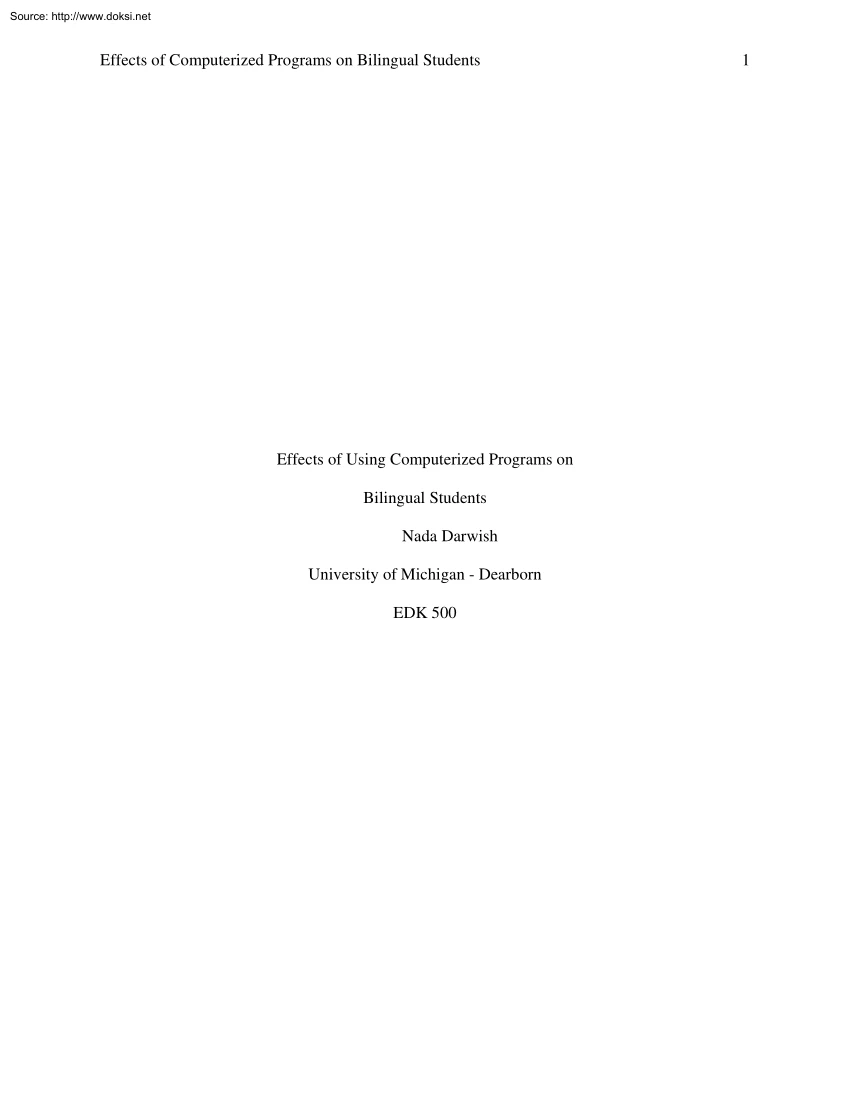
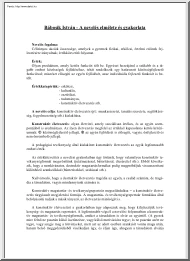
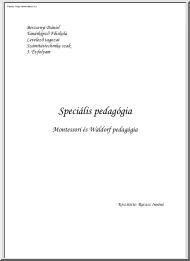
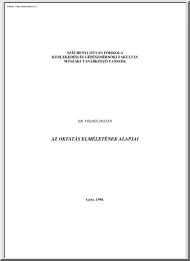
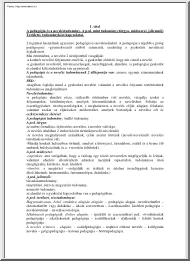
 Just like you draw up a plan when you’re going to war, building a house, or even going on vacation, you need to draw up a plan for your business. This tutorial will help you to clearly see where you are and make it possible to understand where you’re going.
Just like you draw up a plan when you’re going to war, building a house, or even going on vacation, you need to draw up a plan for your business. This tutorial will help you to clearly see where you are and make it possible to understand where you’re going.